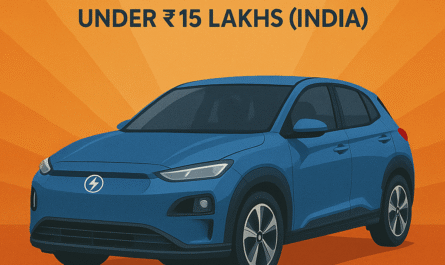As India accelerates toward a sustainable transportation future, battery swapping for electric vehicles (EVs) has sparked serious debate. Is it the next big thing—or just a hyped-up concept with limited real-world utility? Let’s break it down.
🔋 What is EV Battery Swapping?
Battery swapping involves replacing a depleted battery with a fully charged one at a swapping station, instead of waiting for it to recharge. The process can take just 2–5 minutes—faster than traditional EV charging methods.
⚡ Why is Battery Swapping Gaining Attention in India?
- Time Efficiency: Perfect for busy urban commuters and commercial fleets like e-rickshaws, delivery bikes, and taxis.
- Infrastructure Challenges: Swapping stations reduce dependence on widespread charging infrastructure.
- Lower Upfront Costs: Vehicle owners can buy EVs without batteries and pay only for battery usage through subscriptions or pay-per-use models.
🏢 Key Players in India’s Battery Swapping Space
- Bounce Infinity: Offers scooters with swappable batteries and a growing network of swap stations.
- SUN Mobility: Provides swappable battery tech and has partnered with Piaggio, Ashok Leyland, and others.
- Battery Smart: Targets electric rickshaws and two-wheelers with a network expanding rapidly in tier-1 and tier-2 cities.
🚧 Challenges Holding Back Battery Swapping
- Lack of Standardization: Different battery sizes, voltages, and connectors across brands.
- Ownership & Liability Confusion: Who owns the battery? The user, manufacturer, or swapping company?
- Initial Investment Costs: Setting up automated swap stations requires significant capital.
- Technology Trust: Users often worry about the health and quality of the swapped batteries.
🇮🇳 Government Push & Policy
The Indian government included battery swapping in its EV policy discussions and proposed a draft policy in 2022. It encourages interoperability and standardization—but progress has been slow.
FAME II incentives, though largely aimed at fixed battery vehicles, might expand if swapping becomes more mainstream.
🔍 So, Is It a Reality or Just Hype?
✅ Reality – In sectors like last-mile delivery, e-rickshaws, and urban two-wheelers.
🚫 Hype – For private EV owners, long-distance drivers, and four-wheelers where fast charging may still be more practical.
Battery swapping has real potential in India—but only if manufacturers, policymakers, and users align to tackle the challenges.
📊 Future Outlook
By 2027, India may have over 10,000 swap stations, according to some reports, mainly catering to commercial fleets. Standardization, incentives, and consumer trust will decide whether it remains niche or becomes mainstream.
🧠 Final Verdict
Battery swapping in India is no longer a futuristic idea—it’s already happening. But for it to scale beyond niche markets, India must resolve standardization and trust issues.


